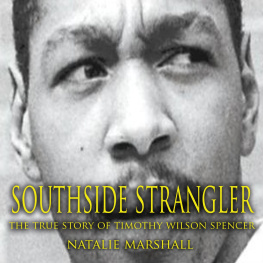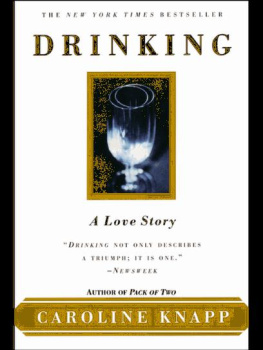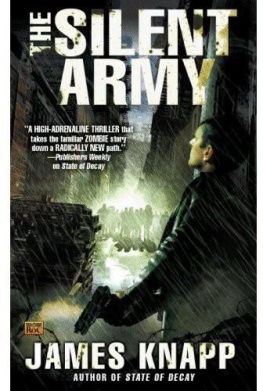

Published by The History Press
Charleston, SC 29403
www.historypress.net
Copyright 2015 by Richard O Jones
All rights reserved
First published 2015
e-book edition 2015
ISBN 978.1.62585.553.4
Library of Congress Control Number: 2015933020
print edition ISBN 978.1.46711.750.0
Notice: The information in this book is true and complete to the best of our knowledge. It is offered without guarantee on the part of the author or The History Press. The author and The History Press disclaim all liability in connection with the use of this book.
All rights reserved. No part of this book may be reproduced or transmitted in any form whatsoever without prior written permission from the publisher except in the case of brief quotations embodied in critical articles and reviews.
To my parents
CONTENTS
FOREWORD
The expression truth is stranger than fiction applies to countless criminals along the dark places of our history and especially to the life of an Indiana thug named Alfred Knapp, a ruthless strangler of young girls whose behavior was insanely compulsive, manipulative, vain, flamboyant and downright idiotic.
Youve likely never heard of Alfred Knapp, but in 1903, the handsome and habitual criminal became an overnight media sensation after he confessed to murdering five young women and girls in Ohio and Indiana (including his third wife) over the course of a decade. The newspapers called him Americas Jack the Ripper. His electrocution in 1904 in Columbus, Ohio, prompted newspaper headlines across the nation, and thousands of curiosity seekers swarmed the funeral home to view his corpse.
With the passage of time, he has joined a roll call of violent psychopaths now long forgottenhis legacy tucked away in old newspaper microfilm reels and musty court records that are rarely visited. True crime historian Richard O Jones has revived Knapps bizarre and disturbing story. A veteran newspaper reporter, Jones not only weaves together a compelling and highly readable narrative but also explores the social fabric of southern Ohio at the dawn of the twentieth century and its industrial cities of Hamilton and Cincinnati.
Knapps notoriety was propelled by a newspaper industry at its economic zenith. Before radio and television, American cities supported multiple newspapers with sizable staffs competing with screaming headlines and special editions. Media sensationalism is not a new phenomenon. It was rampant in the Victorian age, and Knapp exploited it. After his arrest, the only action capable of keeping his mouth shut was the application of 1,750 volts of electricity while he was strapped to a chair.
Hundreds of detailed articles from Ohio and Indiana newspapers provided Jones with extraordinary source material for re-creating this detailed and lively account. Joness research is meticulous, but the book doesnt read like a simple rehash of newspaper articles. Jones is a longtime resident of the Hamilton area, and he brings color to the narrative from knowing firsthand the neighborhoods where key events in Knapps life occurred.
My family is personally connected to one of Knapps evil deeds, which Jones covers in detail. In 1902, Knapp brutally strangled and stabbed my grandmother, Stella Motzer Kennedy, when she was a young girl in Hamilton, Ohio. Miraculously, she escaped his clutches, and with blood streaming down her face, she raced down a dark alley to safety. Her trail of blood guided her family back to a spot in the alley where her younger sister laid unconscious after being struck by Knapp. Then my traumatized six-year-old grandmother accused the wrong man. The jury acquitted the innocent man, leading to a public relations disaster for the Motzer family. The case remained unsolved until Knapp, from his prison cell, confessed to the assault of the Motzer girls.
My grandmother essentially took the nightmare to her grave. She never told her own children about it. Still, the attack affected her for the remainder of her life, and the event ultimately scarred her entire family. Just months after Knapps execution, her own mother (my great-grandmother) died suddenly at age thirty-five. I am led to believe Knapps vicious assault on her little girls and its aftermath contributed to her death.
There is never one victim of a violent crime. It impacts entire families in ways that can last for decades. Perhaps this is the greatest value in preserving crime historyto allow descendants of the victims to better appreciate the anguish carried by their ancestors.
Make no mistake about it. Jones has written an entertaining piece of history that reads like a detective yarn. Given the family wreckage created by Knapp more than a century ago, this book is sure to find its way to readers who may learn about a dark period in their own family histories that would have been lost forever.
RICK KENNEDY
Rick Kennedy is the author of Jelly Roll, Bix & Hoagy: Gennett Records and the Rise of Americas Musical Grassroots. He co-authored with Randy McNutt Little Labels Big Sound. He lives in Cincinnati, Ohio.
ACKNOWLEDGEMENTS
Thanks most of all to Barbara Didrichsenmy sweetheart, best friend and trusted first editor. Without your support and encouragement, this book would not have happened.
Thanks also to the staff at the Public Library of Cincinnati and Hamilton County, the Lane Libraries and the Indianapolis Public Library; to Valerie Elliot and Samantha Harris at the Smith Library of Regional History; to Kathy Creighton at the Butler County Historical Society and Ed Creighton for his vast knowledge of Cincinnati history; and to my cadre of first readers for the valuable advice on the earliest drafts.
Also thanks to Jim Blount, Curtis Ellison, the Colligan History Project, the Miami University Hamilton Downtown center and anyone else who helped give voice to True Crime Historian.
Thank you also to Sandra M. Orlett, photographer.
THE CINCINNATI, HAMILTON AND INDIANAPOLIS LINE
The Hamilton Evening Sun put out its first early edition five hours ahead of normal press time on Wednesday, February 25, 1903, ready for travelers at the local train stations by 10:00 a.m. The blazing headline read KNAPP ARRESTED FOR WIFE MURDER, and below it, STARTLING AFFAIR BROUGHT TO LIGHT.
The most lurid of the Southwestern Ohio citys three daily newspapers at the time, the Sun bragged that it beat even the Cincinnati press with that four-page EXTRA detailing the arrest of former Hamilton man Alfred Knapp in connection with the disappearance of his third wife, Hannah Goddard Knapp, who had been missing since before the holidays. Word reached Hamilton that Knapp had gotten married again, an act that confirmed the belief among some of his family that he had murdered Hannah.
The Sun received some copy for the story by telegraph from Indianapolis, where Hamilton police captain Thomas Lenehan rode through the night to enlist the aid of local law enforcement to find and arrest forty-year-old Alfred Andrew Knapp for bigamy, as there was no proof of murder yet. The headline was not quite accurate as the confession and a formal charge of homicide were still hours away.
Hannah had been reared in Hamilton by her uncle, Charles Goddard, after the death of her father, his brother William, when she was just a baby. Uncle Charley, a widower, lived alone in two rooms of a little cottage behind the Hamilton Depot on Central Avenue, a station shared by the Cincinnati, Hamilton and Dayton (CH&D) and the Cincinnati, Hamilton and Indianapolis (CH&I) lines. Hannah had two half sisters in Hamilton, Bertha Hoagland of Sixth Street and Linda Sterritt of Front Street.
Next page













